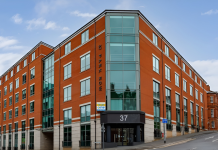Charlie Davidson, an Associate Solicitor at solicitors Bishop & Sewell, explains that whilst there are restrictions and responsibilities to owning a piece of British heritage, if you know what you’re doing and you’re well advised, even Grade 1 should hold no terrors.
A building being Listed is a celebration of that building’s architectural and cultural value. Being Listed also brings a building under the protection of the English planning system, so that it may be preserved for future generations. Buying a Listed property can bring with it unique challenges and responsibilities that you must be alive to during the conveyancing process and beyond.
A Listed building is defined by section 1(5) of the Planning (Listing Buildings and Conservation Areas) Act (1990) (“the Act”) as “a building which is for the time being included in a list compiled by or approved by the Secretary of State”. In this case, the power falls to the Department of Culture, Media, and Sport.
When you own a Listed building, you are not just a registered proprietor; you are a custodian of part of this country’s heritage. Therefore, whilst this should undoubtedly be considered to be a privilege, you will also be assuming a certain amount of responsibility.
There are three grades of listing, based on a building’s architectural and/or historic interest:
- Grade I: These are buildings of exceptional national importance. Approximately 2.5% of all Listed buildings are Grade I Listed;
- Grade II*: These are particularly important buildings of more than special interest and have some national significance. Approximately 5.5% of all Listed buildings are Grade II* Listed; and
- Grade II: These are buildings of special interest, warranting every effort to preserve them, but tend to be of more local importance.
For the purposes of the Act, a “Listed building” can mean each of the following –
- The building itself; and/or
- Any object or structure fixed to the building; and/or
- Any object or structure within the land attached to the building that forms part of the land and has done so since before 1 July 1948.
Once a building has been Listed, it will normally require Listed building consent before it can be demolished, altered or extended. This is a separate issue from planning permission you would normally encounter. Some normally permitted development rights will also not apply. Listed building consent may be required in tandem to planning permission or on its own. Because of the wide definition of what a Listed building may entail, it is important to be extra diligent while undertaking any form of work to any such building.
Listed building consent is required for either:
- The total demolition of a Listed building; or
- Any alterations or extensions that would affect the Listed building’s character, both inside or out.
It is important to note that not all works will require Listed building consent. Listed building consent is only required for works, such as internal or external alterations, that affect the character of the building. This can be a matter of individual judgement. As a result, there is scope for differences of opinion (and argument) between the local planning authority, who has the ultimate say so, and Listed building’s owner. This is where the advice of a surveyor with a background in dealing with Listed buildings can be invaluable.
Under the Act, if work is carried out that should have had consent but no such relevant application has been made, the local planning authority has the power to take one or more of the following actions:
- Criminal Prosecution of the people who actually carried out the work in question and the people who allowed the work to carried out. Prosecution does not require the reversal any unauthorised works to a Listed building. Its purpose is to punish the offender and act as a deterrent to others. The punishment can range from an unlimited fine or up to two years imprisonment (or both); and/or
- Serve a Listed building enforcement notice. If works are carried out to a Listed building without Listed building consent, enforcement can require the owner to bring the building back to its former state. Unlike breach of planning permission or building regulations, there is no immunity period for Listed building enforcement action; and/or
- Apply to the court for an injunction. An injunction, being a court order to halt works and reinstate the building back to its former state. Injunctions allow the local authority to take action against an anticipated or on-going breach of Listed building control.
Therefore, if you are planning to buy a Listed building, it’s important to take steps to ensure that any, or all, of the works that have been undertaken to the property have been fully and properly authorised by the relevant local authority. Whilst the criminal liability noted above can only be imposed on the people who carried out the work or allowed the work to take place, alternative enforcement actions can still be taken against the new owners, who did not undertake or allow the offending works regardless. This can see new owners of a Listed building being left in the costly situation of having to reverse works that the previous owners carried out or allowed to be carried out.
It should be noted that this article only addresses the issue of Listed properties that are situated in England. Listed properties in Wales, Scotland and Ireland have their own separate legislation and are therefore outside the scope of this article.
At Bishop & Sewell, we have nearly than 40 years’ experience in conveyancing, and are thoroughly familiar with the process. We know what to expect from other solicitors, but we always treat our clients as individuals with their own particular needs and concerns. We will provide you with a dedicated conveyancing lawyer, who you will work with from start to finish.
Charlie Davidson is an Associate Solicitor in Bishop & Sewell’s Property team. If you are thinking of buying a Listed property or you have any questions regarding your existing property, please call 020 7091 2716 and ask for a member of the Property team or email [email protected]
About Bishop & Sewell LLP
Bishop & Sewell is a long-established, full service Central London law firm – with an international reach – specialising in Personal, Property and Commercial legal matters. To learn more, visit www.bishopandsewell.co.uk






















